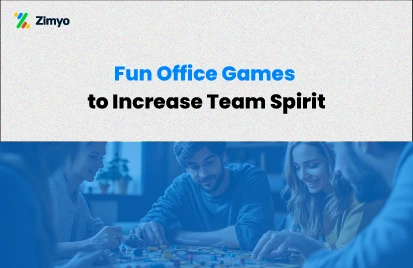We are all motivated in different ways. Some of us thrive on targets, others get enticed by rewards and some are gratified by a heartfelt thank you. Combining all three approaches is perhaps the best way to create a loyal and productive workforce.
Recognition is a requirement for business success. Every member of your team craves and deserves frequent, in-the-moment recognition. Employees want to know that their efforts, even the small ones, are appreciated. This is not just an exercise in making your employees feel good, either. Employees produce better work when they are recognised for it, affecting your company’s bottom line.
According to a recent survey, increasing recognition from twice a month to twice a week yielded a five percent increase in customer satisfaction scores. In addition, the survey revealed that organisations with highly engaged workplaces outperform their peers by 147 percent in earnings per share.
Of course, practicing recognition is not as easy as purchasing a platform and hoping for the best. Companies need to carefully tailor their employee recognition program to their unique environment to ensure it delivers results.
Find out everything you need to get your employee recognition program up and running, from the types of recognition you should incorporate to the program’s design, to building a business case for recognition.
 Selecting the right platform makes an enormous difference in how successful your recognition program will be. Firstly, your platform needs to get employees excited about participating and know what rewards employees will like. Advanced recognition platforms may have features where colleagues can easily boost recognitions and redeem points for rewards of their choosing. Secondly, your recognition program must be so easy to use that it fits into your employees’ everyday workflow. And thirdly, your platform should measure return on investment in a way that instills trust in executive and management teams.
Recognition, whether virtually or in person, follows the same basic tenets, but becomes centre stage in a virtual working world. An effective Virtual Recognition Program will not only help you satisfy people’s psychological needs and make the experience memorable but also build an organisational culture that values connections and individual contributions.
To begin with, let’s understand the different types of recognition that need to be part of your strategy.
Selecting the right platform makes an enormous difference in how successful your recognition program will be. Firstly, your platform needs to get employees excited about participating and know what rewards employees will like. Advanced recognition platforms may have features where colleagues can easily boost recognitions and redeem points for rewards of their choosing. Secondly, your recognition program must be so easy to use that it fits into your employees’ everyday workflow. And thirdly, your platform should measure return on investment in a way that instills trust in executive and management teams.
Recognition, whether virtually or in person, follows the same basic tenets, but becomes centre stage in a virtual working world. An effective Virtual Recognition Program will not only help you satisfy people’s psychological needs and make the experience memorable but also build an organisational culture that values connections and individual contributions.
To begin with, let’s understand the different types of recognition that need to be part of your strategy.
 The PRAISE model defines the broad framework of your Virtual Recognition Strategy. Once you have it in place, you need to populate your platform with innovative ideas, tools and features to bring it alive.
Some of these are:
– Social recognition
Send custom e-cards to recognise others on the social timeline, or upload your own images and photos
– Long-service awards
Say goodbye to your manual processes by automating the celebration of key service milestones and anniversaries
– Nominations
Showcase your superstars, such as ‘Employee of the Month’, with the peer-to-peer nominations tool
– Rewards
Amplify the impact of your recognitions by adding an optional monetary reward
– Company values
Link recognitions and nominations to your company values to bring them to life
– Event recognition
Celebrate good news by recognising new starters, birthdays and promotions
– Notifications
Customise notifications when recognitions are sent to drive engagement
– Manager engagement
Keep line managers in the loop by notifying them of team recognition activity
– Customisable reporting
Monitor recognition metrics with the appropriate software
The PRAISE model defines the broad framework of your Virtual Recognition Strategy. Once you have it in place, you need to populate your platform with innovative ideas, tools and features to bring it alive.
Some of these are:
– Social recognition
Send custom e-cards to recognise others on the social timeline, or upload your own images and photos
– Long-service awards
Say goodbye to your manual processes by automating the celebration of key service milestones and anniversaries
– Nominations
Showcase your superstars, such as ‘Employee of the Month’, with the peer-to-peer nominations tool
– Rewards
Amplify the impact of your recognitions by adding an optional monetary reward
– Company values
Link recognitions and nominations to your company values to bring them to life
– Event recognition
Celebrate good news by recognising new starters, birthdays and promotions
– Notifications
Customise notifications when recognitions are sent to drive engagement
– Manager engagement
Keep line managers in the loop by notifying them of team recognition activity
– Customisable reporting
Monitor recognition metrics with the appropriate software
 Selecting the right platform makes an enormous difference in how successful your recognition program will be. Firstly, your platform needs to get employees excited about participating and know what rewards employees will like. Advanced recognition platforms may have features where colleagues can easily boost recognitions and redeem points for rewards of their choosing. Secondly, your recognition program must be so easy to use that it fits into your employees’ everyday workflow. And thirdly, your platform should measure return on investment in a way that instills trust in executive and management teams.
Recognition, whether virtually or in person, follows the same basic tenets, but becomes centre stage in a virtual working world. An effective Virtual Recognition Program will not only help you satisfy people’s psychological needs and make the experience memorable but also build an organisational culture that values connections and individual contributions.
To begin with, let’s understand the different types of recognition that need to be part of your strategy.
Selecting the right platform makes an enormous difference in how successful your recognition program will be. Firstly, your platform needs to get employees excited about participating and know what rewards employees will like. Advanced recognition platforms may have features where colleagues can easily boost recognitions and redeem points for rewards of their choosing. Secondly, your recognition program must be so easy to use that it fits into your employees’ everyday workflow. And thirdly, your platform should measure return on investment in a way that instills trust in executive and management teams.
Recognition, whether virtually or in person, follows the same basic tenets, but becomes centre stage in a virtual working world. An effective Virtual Recognition Program will not only help you satisfy people’s psychological needs and make the experience memorable but also build an organisational culture that values connections and individual contributions.
To begin with, let’s understand the different types of recognition that need to be part of your strategy.
Types of Recognition
Every employee recognition program should include social, monetary and peer-to-peer recognition.– Social recognition
Social recognition allows companies to validate and recognise behaviours that align with company culture. This kind of recognition can come in the form of a shout-out, a digital badge or an announcement in a forum such as a team meeting. Besides increasing engagement, social recognition is non-monetary and that directly translates into reduced costs.– Monetary recognition
Points-based reward structures are a popular form of monetary recognition. Employers distribute a set number of points to each employee that they can give to those who report into them alongside their recognition. Points can then be redeemed for any reward of choice, making them more valued than pre-selected gifts. Other forms of monetary recognition include gift cards, paid-for online hobby courses and/or entertainment such as high-ticket concerts.– Peer-to-peer recognition
Recognition doesn’t always have to come from above. In fact, it should come from both peers and supervisors. Ensure that your program is inclusive and supports peer-to-peer recognition. Platforms that allow any employee to publicly recognise a team or individual allow everyone feel acknowledged and appreciated.What to Look for in Your Virtual Employee Recognition Platform
Some practices that your Virtual Recognition Strategy should ideally comprise are defined in the PRAISE Model:- Personalise Recognition: An effective virtual recognition strategy is built on meaningful appreciation and recognition. Every recognition needs to be specific to the person, her qualities and achievements.
- Recognise Consistently: Recognition activities tend to get overlooked in times of change and uncertainty. A consistent and scheduled approach to recognition ensures that timely acknowledgements happen. Employees are keen that every effort they make is noticed and they eagerly wait to be recognised. Building such an expectation can have a positive impact on productivity.
- Appreciate Collectively: Team interactions have become all the more important in our virtual workplaces. It is important the recognition is not only one on one between a manager and the employee, but amongst her entire team. During virtual meetings, team members can be encouraged to share stories that highlight and recognise the recipient’s work. A virtual social wall is an example of peers appreciating each other.
- Involve Everyone: The more the people that recognise the recipient, the more motivated she feels. So celebrations or recognition can be extended beyond the recipient’s team to include other colleagues and family members as well. Make it public by providing a testimonial on social media platforms. Let the recipient share the appreciation with her world and win appreciation from everywhere.
- Schedule Recognition Time: Recognition deserves its own space and time. Mark your calendars for a slot specifically for recognition. While callouts during team meetings or virtual town halls are necessary, recognition needs to be exclusive to be a remarkable and impactful experience.
- Encourage Innovative Recognition Ideas: Send some home desk goodies, a pizza or a box of cookies to the recipient. Design an Achiever’s Badge, a special certificate or even a fun T-shirt. Don’t let the distance dull the importance of these moments.
 The PRAISE model defines the broad framework of your Virtual Recognition Strategy. Once you have it in place, you need to populate your platform with innovative ideas, tools and features to bring it alive.
Some of these are:
– Social recognition
Send custom e-cards to recognise others on the social timeline, or upload your own images and photos
– Long-service awards
Say goodbye to your manual processes by automating the celebration of key service milestones and anniversaries
– Nominations
Showcase your superstars, such as ‘Employee of the Month’, with the peer-to-peer nominations tool
– Rewards
Amplify the impact of your recognitions by adding an optional monetary reward
– Company values
Link recognitions and nominations to your company values to bring them to life
– Event recognition
Celebrate good news by recognising new starters, birthdays and promotions
– Notifications
Customise notifications when recognitions are sent to drive engagement
– Manager engagement
Keep line managers in the loop by notifying them of team recognition activity
– Customisable reporting
Monitor recognition metrics with the appropriate software
The PRAISE model defines the broad framework of your Virtual Recognition Strategy. Once you have it in place, you need to populate your platform with innovative ideas, tools and features to bring it alive.
Some of these are:
– Social recognition
Send custom e-cards to recognise others on the social timeline, or upload your own images and photos
– Long-service awards
Say goodbye to your manual processes by automating the celebration of key service milestones and anniversaries
– Nominations
Showcase your superstars, such as ‘Employee of the Month’, with the peer-to-peer nominations tool
– Rewards
Amplify the impact of your recognitions by adding an optional monetary reward
– Company values
Link recognitions and nominations to your company values to bring them to life
– Event recognition
Celebrate good news by recognising new starters, birthdays and promotions
– Notifications
Customise notifications when recognitions are sent to drive engagement
– Manager engagement
Keep line managers in the loop by notifying them of team recognition activity
– Customisable reporting
Monitor recognition metrics with the appropriate software




